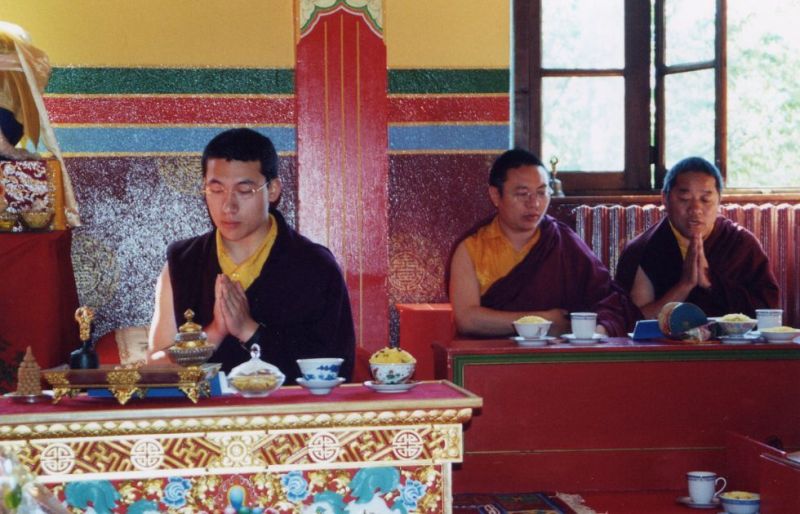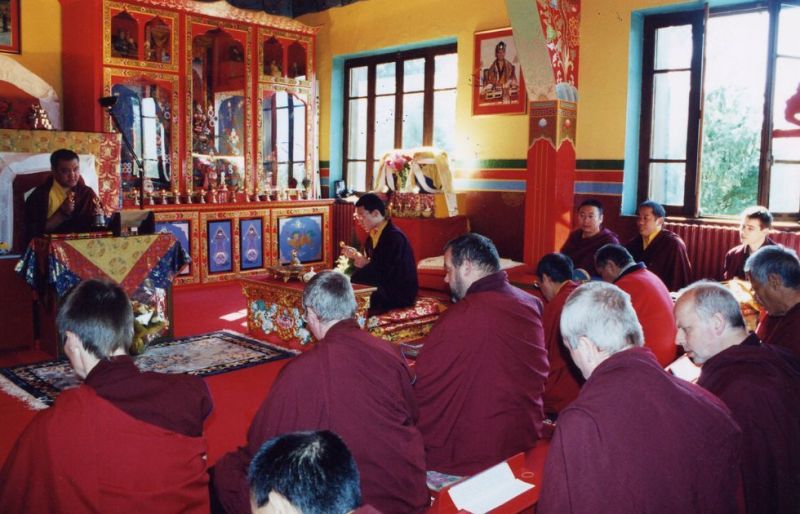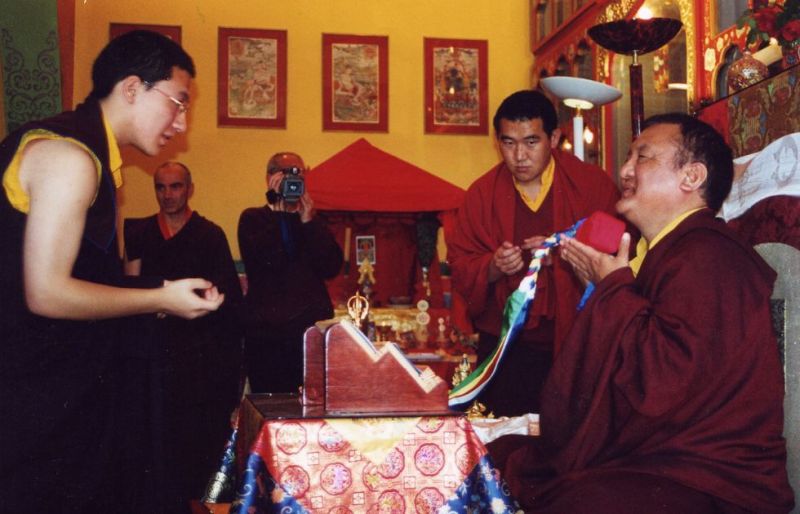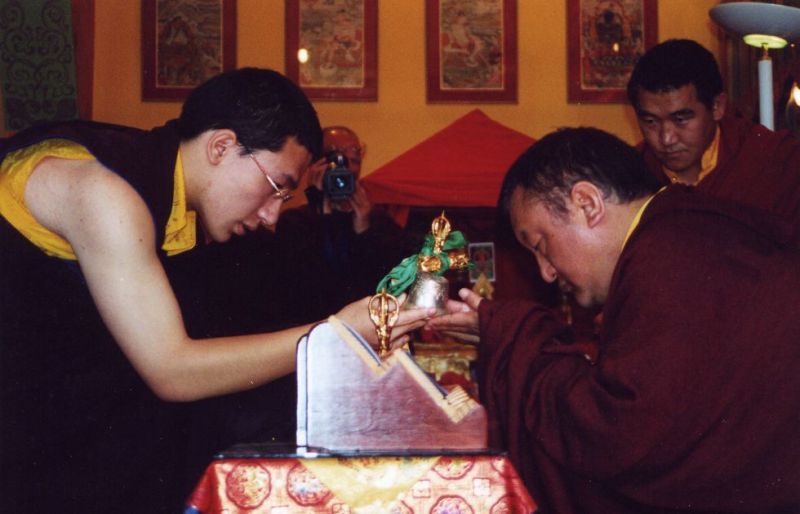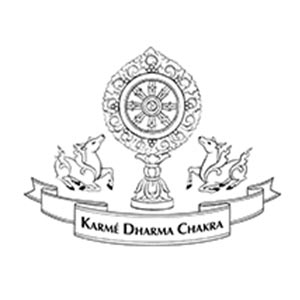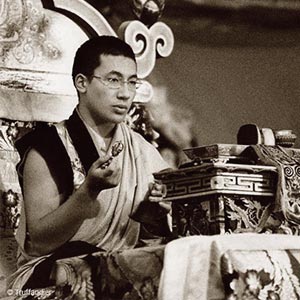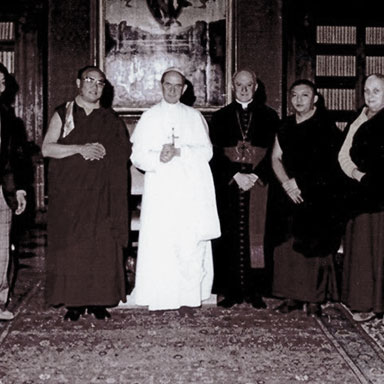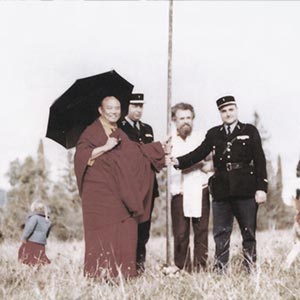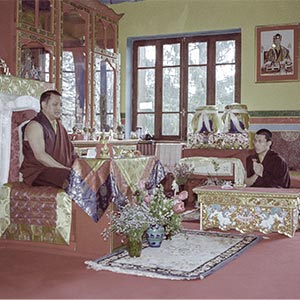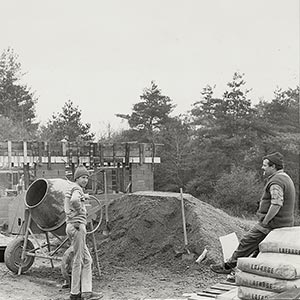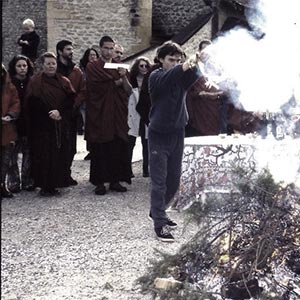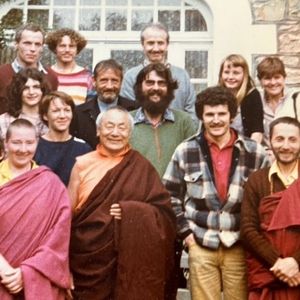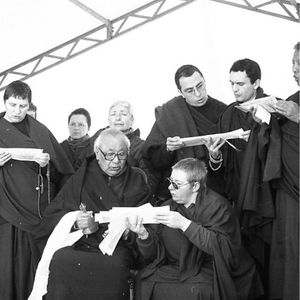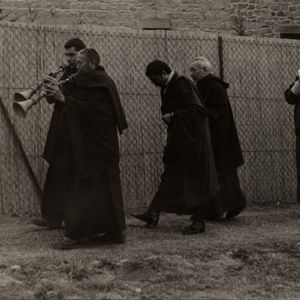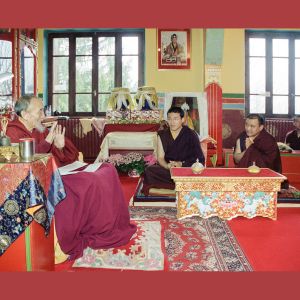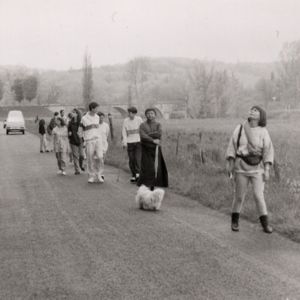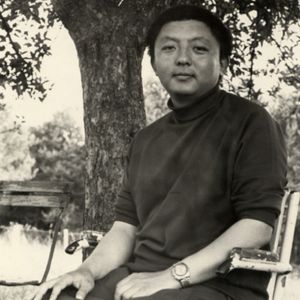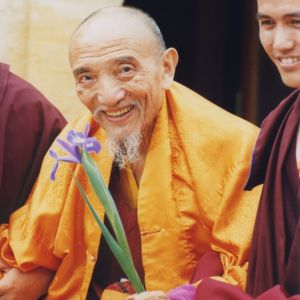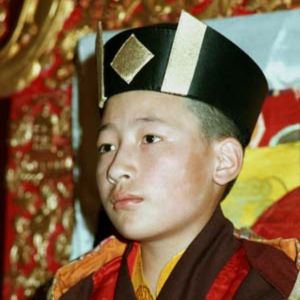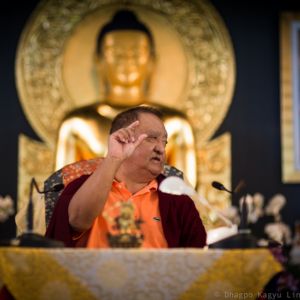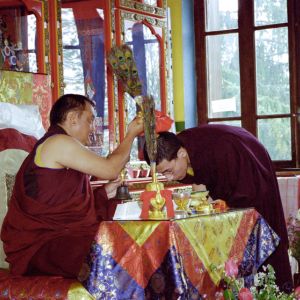In May 2000, Thaye Dorje, His Holiness the 17th Gyalwa Karmapa, then in retreat at Dhagpo Kundreul Ling since February, received the transmission of two key collections of the Karma Kagyü lineage, the Chagchen Gyazhung, a collection of Indian texts on Mahamudra compiled by the 7th Karmapa and the empowerment collection entitled Chik She Kün Dröl (Knowledge of One Thing; Everything Is Liberated), compiled by the 9th Karmapa (see below).
His Holiness, the 14th Künzig Shamarpa, Mipham Chökyi Lodrö (1952–2014) conferred these transmissions. He cared for the education of the young Karmapa just as the 16th Karmapa had done for him.
This uninterrupted continuum of transmission of the methods leading to liberation from suffering and to enlightenment are purely held by what is called The Golden Rosary of the Karma Kagyü Lineage.
These photos come from our archives or were collected as part of the research for Dhagpo Kagyu Ling’s 50th anniversary. We have not been able to identify all the authors. The use of these photos is solely for informational purposes within the context of Dhagpo Kagyu Ling’s 50th anniversary celebration. Their use is limited to this event and our website and is not for commercial purposes.
Event
The 17th Karmapa’s birthday as well as the transmissions he received from Künzig Shamar Rinpoche at Kundreul Ling will be marked by a day of practice at Dhagpo Kagyu Ling and Dhagpo Kundreul Ling.
![]() Part of this event will take place onsite only; another part will be offered onsite and online.
Part of this event will take place onsite only; another part will be offered onsite and online.
Ces photos proviennent de nos archives ou ont été recueillies dans le cadre des recherches pour les 50 ans de Dhagpo Kagyu Ling. Nous n’avons pas pu identifier tous les auteurs. L’utilisation des photos est à titre informatif dans le cadre de la célébration des 50 ans de Dhagpo Kagyu Ling. Leur usage est limité à cette actualité et à notre site et n’est pas à usage commercial
The Indian Texts of Mahamudra of Definitive Meaning or Chakchen Gyazhung
The vast collection entitled The Indian Texts of Mahamudra of Definitive Meaning (Nges don phyag rgya chen po’i rgya gzhung) compiled by the 7th Karmapa Chödrak Gyamtso (1454–1506) contains the Tibetan translation of the teachings and songs composed by the Indian Buddhist masters who originated the Kagyu lineage and are its source of inspiration. This collection offers a glimpse of the immense wealth of Indian Mahamudra texts.
In its xylographic edition printed at the Karma Kagyu monastery in Palpung, Eastern Tibet, the collection filled three large volumes, as does the reprint produced under the 14th Shamar Rinpoche’s guidance in Delhi in 1997. The modern edition in book form (2009) is made up of six volumes with a total of 2,600 pages in Tibetan. The collection is in the process of being translated by Karl Brunnhölzl and Wisdom Edition; four of the six volumes have been published.
The great majority of the 217 works included in this anthology come from the Tengyur, the collection of the realized, scholarly Indian masters that have been translated into Tibetan (in contrast with the Kangyur, which gathers the translation of all the sutras, or teachings of Shakyamuni Buddha, into roughly one hundred volumes).
The length of these Indian Mahamudra Texts varies from a single sentence to nearly two hundred pages. These works are split into seven genres:
- Anāvilatantra, a tantric teaching attributed to the Buddha and considered to be the primary source of Mahamudra, along with its commentary
- The songs of realization (dohā, caryāgīti and vajragīti) chanted by the Indian masters on different occasions, for example during the ganachakras, or tantric festivals, or during significant spiritual experiences
- The commentaries on these songs of realization and on other texts
- the independent tantric treatises
- the non tantric treatises
- the edifying narratives
- doxographies (texts presenting the different Buddhist and nonBuddhist systems of thought)
Most of the authors of these works are well known figures among the eighty-four mahasiddhas, the men and women who were highly accomplished in the practice of the Buddhist tantras. The fact that a large number of these texts was attributed to Maitripa and Saraha underlines the fact that these two masters are considered to be the most important sources of Mahamudra in the Kagyu school.
In contrast to other collections such as the Collection of All the Sadhanas (Druptab küntü) or Knowing One to Liberate All (Chikshé kündröl), this collection is not made up of empowerments but texts that are transmitted by ritual reading (lung) or explanation (tri).
Knowing One to Liberate All (Chikshé kündröl)
Transmission of an empowerment is a very important ritual in Tibetan Buddhism. By receiving empowerment, the practitioner crosses a threshold that allows them to engage in the practice of the Buddhist tantras, the Vajrayāna. There are two forms of empowerment: the transmissions of power (wang or abhisheka) and the practice authorizations (jenang). The first belong to the class of tantras of Insurpassable Yoga (Niruttaratantra) and are associated with tantras such as Hevajra, Chakrasamvara or Kalachakra. By receiving a wang, the practitioner penetrates into the mandala of a specific yidam and is authorized to engage in the practice of the creation phases (kyerim) and perfection phases (dzogrim) of this yidam. We also call this type of empowerment a major empowerment to designate the fact that it contains the four empowerment phases (of vase, secret, wisdom and word) and is associated with the fourteen root samayas and numerous related commitments. The practice authorizations are empowerments that authorize the practitioner to meditate in the form of the specific yidam. They are associated with the first step of the power transmissions, the vase initiation, and allow for practicing the creation phase.
The collection entitled Knowing One to Liberate All (gcig shes kun grol) is a collection that brings together numerous authorization for meditating on various peaceful and wrathful yidams. This collection was composed by the 9th Karmapa Wangchuk Dorje (1556–1603) and relies upon the traditions of the previous Karmapas, notably 6th Karmapa Tongwa Dönden and 8th Karmapa Mikyö Dorje, as well as previous compilations. It brings together the ritual empowerments and practice of twenty-three peaceful divinities including White Tara, Green Tara, White Umbrella (Dukkar), Majushri seated on a lion, Maitreya, etc., and twenty wrathful divinities including Vajrapani, Hayagriva, Red and Black Yamantaka, etc., as well as ten additional divinities including Yellow, Black, and White Jambhala, Sangye Menla, Sakyamuni, etc.
The unique aspect of this collection is that the 9th Karmapa established a common model for empowerment transmission, with three possibilities for extensive, medium-length or very succinct rituals. This model is then applied to each of the divinities, who is described in a specific sadhana, whose lineage and history are specified and whose appearance, mantra, seed syllables, etc. are described. This characteristic of the collection explains its title “knowing one practice authorization for liberating [or transmitting] all” (rjes gnang gcig shes kun grol), though the more poetic meaning—that knowing one essential things allows for liberating from all obscurations—is probably also implied.
The very practical nature of this collection has made it very popular in the Karma Kagyu lineage, and therefore it is often used to authorize disciples to practice the various

